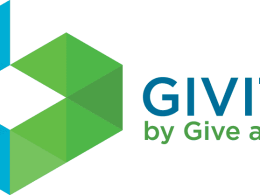In today’s fast-paced work environment, organizations recognize employee feedback’s value in boosting productivity and fostering engagement. Consequently, employee feedback tools have sparked a workplace revolution by offering insights and promoting growth and development. However, with the abundance of options available, businesses often face the challenge of selecting employee feedback tools. Consider the factors when choosing tools that best meet your organization’s needs.
Defining Feedback Objectives
Before settling on employee feedback tools, it is vital to understand how they will serve your organization’s purpose. Feedback tools come in forms such as surveys, pulse check-ins, and continuous feedback platforms, and each type caters to specific objectives.
Surveys
Surveys prove beneficial for gathering feedback on specific projects, initiatives, or overall work environments. They are particularly effective for measuring employee engagement levels or identifying areas for improvement.
Pulse Check-Ins
Pulse check-ins are frequent feedback tools designed to capture real-time insights.
These tools are precious for maintaining lines of communication and promptly addressing any emerging concerns or issues that may arise.
Continuous Feedback Platforms
Platforms facilitating conversations and feedback exchanges between managers and employees are immensely beneficial. These platforms work well for organizations that prioritize feedback and aim to cultivate a culture of improvement.
By defining the purpose of your feedback initiative, you can select the employee feedback tool that aligns with your organizational goals and values.
User Friendliness
Another aspect to consider when evaluating employee feedback tools is their ease of use. A user-friendly and intuitive tool will save time and encourage employee participation rates. Look for tools with a user-friendly interface, making it effortless for users to provide feedback.
Furthermore, take into account the accessibility of the tool. In today’s work environment, choosing a feedback tool that can be accessed from anywhere, regardless of device or location is crucial. Cloud-based platforms often serve as a choice since they offer access and seamless integration into existing workflows.
Adaptability and Customization
Each organization has different requirements when it comes to feedback. Hence, opting for a tool that provides flexibility and customization options tailored to your needs is essential.
Consider looking for tools to customize surveys, questions, and feedback formats according to your requirements.
Furthermore, consider the flexibility to adjust the frequency and timing of collecting feedback. Some organizations prefer annual check-ins, while others may opt for biannual surveys. Ensure the chosen feedback tool can accommodate your frequency and adapt as your organization evolves.
Analytics and Reporting
Collecting feedback holds value only if you can extract insights from the gathered data. When choosing an employee feedback tool, consider its analytics and reporting capabilities. Look for tools that offer reports, visualizations, and trend analysis so that you can identify patterns and make decisions based on data.
The ability to segment and filter feedback data is also crucial. This feature allows you to analyze feedback based on criteria such as department, location, or tenure, providing an overview of your organization.
Integration with Existing Systems
Selecting an employee feedback tool that seamlessly integrates with your organization’s systems and workflows is vital. For example, if you already use a performance management system, choosing a feedback tool that integrates with it will streamline processes and eliminate the need for duplicating data entry.
Integrating collaboration tools, like project management software or communication platforms, can significantly enhance the feedback experience. These tools allow employees to provide feedback directly within their work processes, making it an integral part of their workflow.
Prioritizing Security and Privacy
When dealing with employee data, it is crucial to prioritize security and privacy. Choosing a feedback tool that adheres to industry-leading security standards and uses encryption techniques for data transmission and storage is essential.
Furthermore, carefully review the privacy policy of the chosen tool to ensure ethical handling of employee feedback data. Remember that data privacy regulations may vary depending on your organization’s location, so consider compliance requirements before finalizing your decision.
Conclusion
Selecting employee feedback tools can transform organizations by boosting engagement, productivity, and growth.
When evaluating these tools, consider factors such as purpose, ease of use, customization options, analytics, and reporting capabilities integration with existing systems as security and privacy measures.
By making a thoughtful choice in selecting a feedback tool, organizations can embark on a revolution in receiving input from their workforce.












